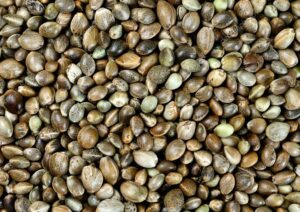Hemp, a versatile and sustainable crop, has garnered immense attention for its myriad applications. Whether you’re a seasoned farmer or a novice enthusiast, understanding the nuances of hemp germination is crucial for cultivating a thriving and productive crop. In this article, we’ll explore the art of hemp germination and delve into best practices that can elevate your cultivation endeavors.The Basics of Hemp Germination:Before we dive into best practices, let’s briefly understand the process of hemp germination. Germination is the initial stage in the life cycle of a hemp plant, where the seed transforms into a seedling. This phase sets the foundation for the plant’s growth, affecting its overall health and productivity.

Best Practices for Hemp Germination:
- Quality Seeds Matter: The first step toward a successful hemp germination process begins with selecting high-quality seeds. Ensure that your seeds come from reputable sources, as the viability of the seed directly influences germination success.
- Pre-soaking Seeds: Many cultivators find success by pre-soaking hemp seeds before planting. Soaking the seeds in water for 24-48 hours helps break dormancy and encourages faster germination. Be cautious not to over-soak, as it may lead to rot.
- Choose the Right Growing Medium: Opt for a well-draining and nutrient-rich growing medium for your hemp seeds. A mixture of peat moss, perlite, and vermiculite is often favored for its ability to provide adequate aeration and moisture retention.
- Ideal Temperature and Humidity: Hemp seeds thrive in warm and humid conditions. Maintain a consistent temperature range of 70-85°F (21-29°C) during the germination period. Using a humidity dome or a plastic wrap can help create a controlled environment for optimal germination.
- Lighting Conditions: Hemp seeds don’t require light for germination, but once the seedlings emerge, they need ample light for healthy growth. Provide 18-24 hours of light per day during the early stages to encourage robust seedling development.
- Planting Depth: Plant your hemp seeds at an optimal depth of around 0.5 to 1 inch in the growing medium. Planting too deep or too shallow can affect germination rates.
- Regular Moisture, Not Soggy Soil: Maintain consistent moisture levels in the growing medium. While hemp seeds require moisture for germination, it’s crucial to avoid waterlogged conditions that can lead to damping off—a fungal disease affecting young seedlings.
- Patience and Observation: Germination is a gradual process, and patience is key. Regularly monitor your seeds and seedlings for any signs of issues, such as pests or diseases. Prompt action can prevent potential setbacks.
Hemp germination is both an art and a science. By incorporating these best practices into your cultivation routine, you set the stage for a successful hemp crop. Remember, each step in the germination process plays a vital role in shaping the future of your hemp plants. Happy growing!


Recent Comments